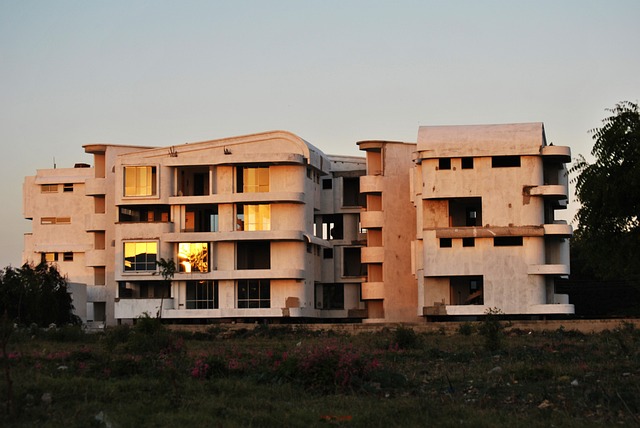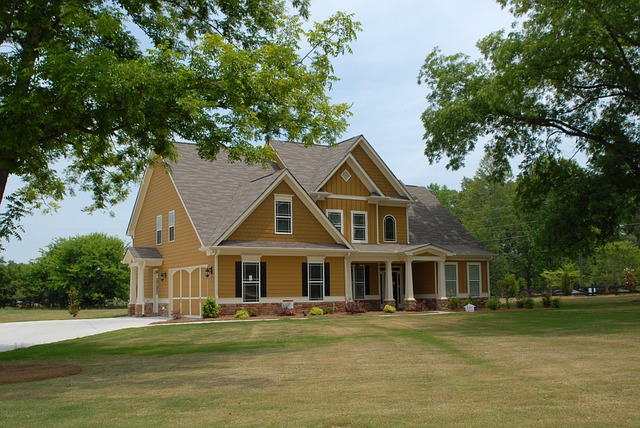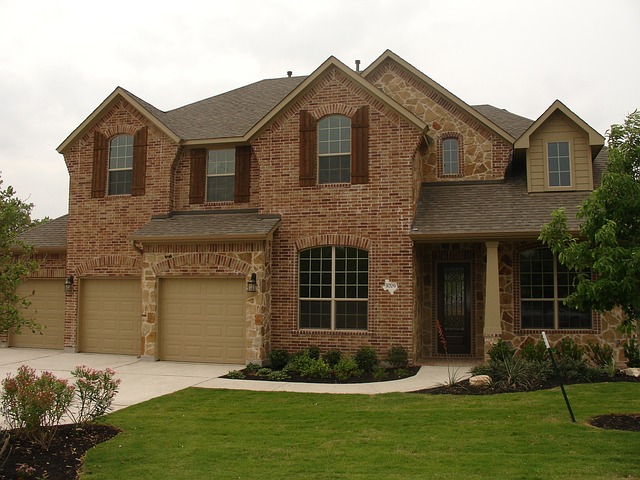The EC condo market in Singapore, catering to first-time buyers and young professionals, offers modern, mid-sized apartments with competitive pricing due to HDB policies and limited land. The secondary resale market thrives with transparent pricing and secure …….
Category: Ec Condo
Introduction
In recent years, the term “ec-condo” has emerged as a beacon of sustainable living within the urban landscape. This article delves into the multifaceted world of ecological condominiums, or “ec-condos,” exploring their significance, global impact, and the innovative ways in which they are reshaping our relationship with the environment. By the end of this exploration, readers will have a comprehensive understanding of what ec-condos are, how they function, and why they represent a pivotal step forward in urban development and sustainability.
Understanding ec-condo
An “ec-condo” is a type of residential complex designed with a strong emphasis on environmental sustainability and community living. It integrates green building practices, energy-efficient technologies, and shared amenities that promote a low-impact lifestyle. These condominiums are not just about reducing the ecological footprint; they also foster a sense of community among residents by providing spaces for social interaction and communal activities.
The core components of an ec-condo typically include:
- Energy-efficient design and construction
- Green roofs, gardens, or green walls
- Rainwater harvesting and greywater recycling systems
- Renewable energy sources, such as solar panels
- Low-impact building materials
- Electric vehicle charging stations
- Communal areas for social interaction and shared resources
The historical context of ec-condos is rooted in the growing awareness of environmental issues and the need for sustainable living solutions. As urban populations continue to rise, the demand for housing that not only minimizes environmental impact but also enhances residents’ quality of life becomes increasingly important.
Global Impact and Trends
The influence of ec-condos is felt across the globe as cities grapple with sustainability challenges. Key trends driving the trajectory of ec-condos include:
- A rise in green building certifications (LEED, BREEAM, WELL)
- Increased adoption of smart home technologies
- Growing consumer demand for sustainable living options
- Policy support and incentives for green development
In North America, for instance, there has been a significant uptick in the construction of ec-condos, particularly in cities like Vancouver, Toronto, and New York. In Europe, countries like Germany, Sweden, and the Netherlands are pioneering innovative practices in sustainable living. Asia is also witnessing a surge in ec-condo developments, with cities such as Singapore, Shanghai, and Mumbai leading the way.
Economic Considerations
The economic aspects of ec-condos are multifaceted. They contribute to market dynamics by offering a niche product that appeals to environmentally conscious consumers. Investment patterns reflect a growing interest in sustainable real estate, with investors recognizing the long-term value and resilience of green buildings.
Ec-condos play a crucial role in economic systems by:
- Creating jobs in construction, design, and maintenance
- Reducing long-term operational costs for residents
- Encouraging innovation and investment in sustainable technologies
The economic model of ec-condos often incorporates shared amenities and resources, which can lower individual costs while fostering a sense of community and collective responsibility.
Technological Advancements
Technology is at the heart of ec-condo innovation. Significant advancements in energy efficiency, material science, and smart home technology have made sustainable living more accessible and practical. These include:
- Advanced insulation materials that reduce heat loss
- High-efficiency HVAC systems with AI optimization
- Smart home systems that manage lighting, heating, and cooling
- Integrated renewable energy systems like solar panels and wind turbines
Future potential includes the integration of blockchain for energy trading between residents and the use of biophilic design to enhance occupant well-being.
Policy and Regulation
A comprehensive set of policies, regulations, and legislative frameworks govern ec-condos. These include building codes, green standards, and incentives for sustainable construction. Policies such as the International Green Construction Code (IgCC) provide a baseline for sustainable practices.
Regulatory frameworks also address water conservation, waste management, and energy efficiency. Incentives like tax credits, subsidies, and grants encourage developers to build greener and innovate within the ec-condo space. Compliance with these regulations not only ensures environmental responsibility but also often results in lower utility costs for residents.
Challenges and Criticisms
Despite their many benefits, ec-condos face several challenges and criticisms. These include:
- Higher initial construction costs that can make them less affordable
- The need for education and awareness to foster resident engagement
- Potential resistance from traditional developers and stakeholders
- Ensuring long-term maintenance and upkeep of green features
To overcome these issues, a combination of strategic planning, community involvement, and policy support is essential. Implementing phased development plans that allow for incremental improvements can mitigate high upfront costs. Engaging residents in the design process can ensure greater participation and stewardship.
Case Studies
Several ec-condo projects around the world serve as benchmarks for successful sustainable living. Notable examples include:
- Vancouver’s District Energy System paired with ecological condominiums
- The 180 Energy Kit Homes in Melbourne, Australia, which combine affordability with sustainability
- Berlin’s “Haus der Technikka” which exemplifies the integration of green spaces and energy efficiency in urban environments
These case studies demonstrate the viability and impact of ec-condos on a local and global scale.
Conclusion
Ec-condos represent a forward-thinking approach to urban living, blending environmental responsibility with modern amenities. As cities continue to evolve, ec-condos will play an increasingly vital role in shaping sustainable communities. The success of these developments hinges on collaboration between developers, policymakers, residents, and technology innovators. With the right mix of resources, innovation, and commitment, ec-condos can lead the way toward a more sustainable future.
(Note: This article provides an overview of ec-condos, integrating various aspects such as design, economics, technology, policy, and case studies. For specific data, real-world examples, or in-depth analysis, further research and consultation with experts in urban planning, sustainability, and real estate development are recommended.)
Mastering Executive Condo Launch: From Buzz Creation to Post-Sale Community Building
The successful launch of an Executive Condo (EC) project requires understanding a high-demand market for premium residential properties catering to affluent buyers seeking luxury, modern amenities, and elite locations. Developers must monitor trends, analyze c…….
EC Condo Financing Options: A Guide to Loans, Eligibility, and Payment Schemes
When purchasing an EC (Executive Condominium) in Singapore, buyers must navigate through a variety of financing options tailored specifically for this type of housing. These include competitive bank loans with flexible repayment terms, the use of CPF savings …….
EC Condo Pricing Unveiled: A Deep Dive into Singapore’s Executive Condominium Market
Executive Condominiums (ECs) in Singapore offer a unique middle-ground for buyers, from first-timers to upgraders, with prices influenced by a combination of factors including location, development age, unit type, facilities, and market demand. EC condos stri…….
EC vs Private Condo: A Comprehensive Guide to Ownership, Finances, Lifestyle, and Resale Value
In Singapore's real estate market, discerning between Executive Condominiums (ECs) and Private Condominiums is crucial for potential homeowners. ECs are designed for middle-income earners with a mandatory five-year Minimum Occupation Period (MOP), after …….
Bukit Batok EC Project: Prime Living with Unmatched Accessibility
The Bukit Batok Executive Condominium (EC) is a family-centric living space that offers a blend of urban accessibility and tranquil living within Singapore's heartlands. This EC is ideally situated for convenience, with proximity to public transport like…….
Exploring Premier Amenities at Ec Condo: Your Guide to Luxurious Living and Recreation
EC Condo stands as a paragon of luxury living with its comprehensive array of amenities and eco-friendly designs, offering residents an unparalleled lifestyle experience. The condominium boasts a state-of-the-art fitness center, serene pools, landscaped garde…….
Optimizing Your Lifestyle: A Guide to EC Condo Unit Sizes and Layouts
When considering an Executive Condominium (EC) for your residence in Singapore, it's important to evaluate a range of unit sizes and types to find one that fits your family dynamics and lifestyle needs. EC condos come in various configurations, from compa…….
Tampines EC Progress: Latest Milestones and Amenities for Ec Condo Living
The Tampines EC is an advanced executive condominium (Ec Condo) under development in Singapore's lively Tampines district, dedicated to delivering high-quality homes that merge public and private living. This project, focused on families and young couple…….









